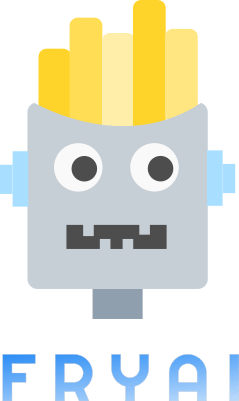- FryAI
- Posts
- One step closer to AI that works 24/7
One step closer to AI that works 24/7

Whether it’s breakthroughs or breakdowns, we’re here to fry the highlights and serve them to perfection. 🔥
Create How-to Videos in Seconds with AI
Stop wasting time on repetitive explanations. Guidde’s AI creates stunning video guides in seconds—11x faster.
Turn boring docs into visual masterpieces
Save hours with AI-powered automation
Share or embed your guide anywhere
How it works: Click capture on the browser extension, and Guidde auto-generates step-by-step video guides with visuals, voiceover, and a call to action.
🤯 MYSTERY AI LINK 🤯
(The mystery link can lead to ANYTHING AI-related: tools, memes, articles, videos, and more…)
Today’s Menu
Appetizer: One step closer to AI that works 24/7 🦾
Entrée: AI Gmail might soon “answer in your style” 📧
Dessert: Researchers use AI to improve cancer care 🙏
🔨 AI TOOLS OF THE DAY
💬 1Stroke: The fastest way to craft meaningful replies anywhere on the web. → Check it out
🩸 BloodTrack: Turn your bloodwork into actionable insights. → Check it out
ONE STEP CLOSER TO AI THAT WORKS 24/7 🦾
My boss told me to have a good day, so I went home! 😆
What happened? Anthropic’s Claude Opus 4 has reached a major milestone: it can now work for seven hours straight without compromising performance, a leap toward AI that could one day work around the clock.
Want the details? Claude 4’s breakthrough comes from its ability to hold a large amount of memory—up to 200,000 “tokens” (think words or word chunks)—letting it stay focused and coherent over long tasks. This is almost double ChatGPT’s 128,000 tokens. Traditional AI models start to forget earlier parts of a conversation or task as sessions drag on, but Claude 4’s expanded memory lets it keep its “train of thought” longer. This makes it much better at handling complex or ongoing work without needing constant resets or supervision.
Why does this matter? If AI can reliably work for hours—or eventually days—it could automate large parts of jobs typically handled by humans, especially entry-level office work. But this power comes with a price: increased energy costs, environmental strain, and serious questions about the future of work.
AI GMAIL MIGHT SOON “ANSWER IN YOUR STYLE” 📧
Yes, we’re talking about emails in an email. 🙃
What’s new? Google DeepMind is developing “next-generation email,” powered by AI, to handle inbox overload.
Want the details? At the SXSW London festival, CEO Demis Hassabis explained that while AI is often hyped for solving huge problems like disease and climate change, he wants it to first tackle the everyday nightmare of email. The goal is to create an AI system that understands your email habits, replies to routine messages in your own tone, and helps you make quick decisions—essentially an assistant that handles the boring stuff so you don’t have to. He sees this as part of a broader vision of a personal AI assistant that enriches your life while protecting your attention from digital distractions.
Why is this significant? If successful, this tech could save people hours each week, reduce stress, and redefine how we interact with technology—starting with one of the most frustrating parts of modern life: the inbox.
“FryAI is the only email you need.”
RESEARCHERS USE AI TO IMPROVE CANCER CARE 🙏
AI is so much more than a chatbot (that may or may not be taking over the world). 😃
What’s up? Researchers at Vanderbilt University Medical Center used AI to develop two new technologies that could improve how cancer is diagnosed and treated.
How does it work? The first tool, MSI-SEER, uses AI to scan digital images of tumor tissue and pinpoint areas likely to respond to immunotherapy—something older methods often miss. It even tells doctors how confident it is in each prediction. The second tool creates 3D images of tissue samples using a special kind of light and deep learning, allowing scientists to see microscopic structures without damaging the tissue. This makes it easier to study cancer, organ rejection, and more, while keeping samples intact for future testing.
Why does this matter? These emerging technologies can help doctors make better decisions and catch more patients who might benefit from cutting-edge treatments. The 3D imaging breakthrough could also speed up drug development and make personalized medicine more accurate and accessible.
“WATCH THIS” WEDNESDAY 👀
In this interview, Google DeepMind CEO Demis Hassabis talks about the path to artificial general intelligence, how long it will take to get there, whether AIs can be creative, and how AIs are trying to deceive researchers:
Learn how to make AI work for you
AI won’t take your job, but a person using AI might. That’s why 1,000,000+ professionals read The Rundown AI – the free newsletter that keeps you updated on the latest AI news and teaches you how to use it in just 5 minutes a day.
HAS AI REACHED SINGULARITY? CHECK OUT THE FRY METER BELOW:
What do ya think of this latest newsletter? |
Your feedback on these daily polls helps us keep the newsletter fresh—so keep it coming!





